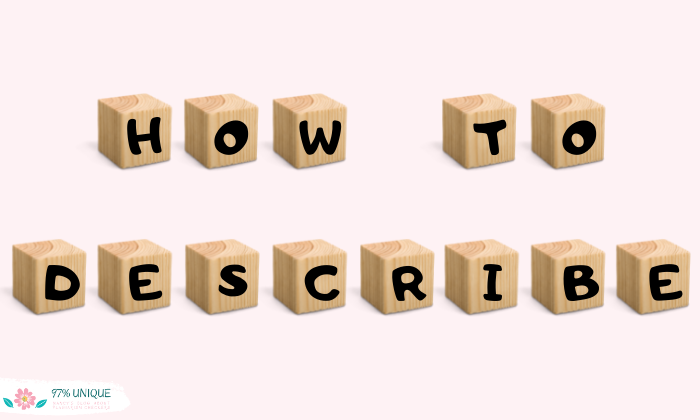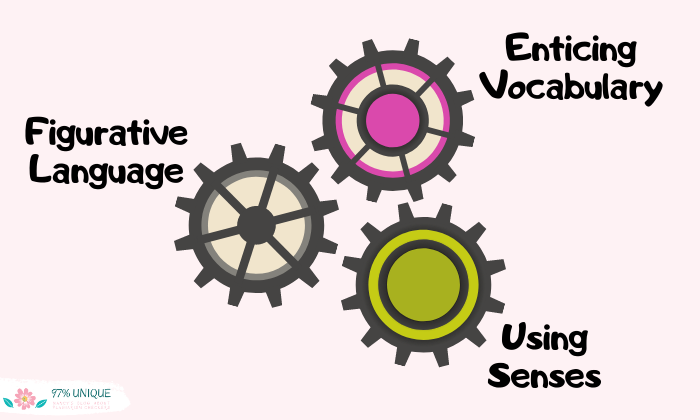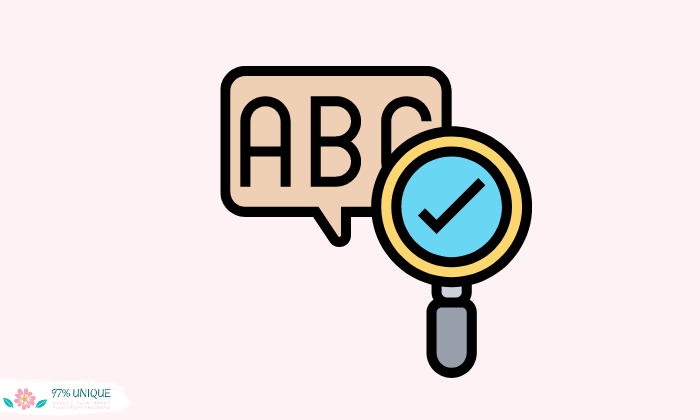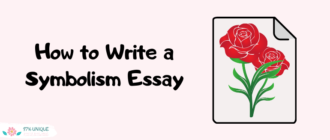
What is the purpose of a descriptive essay?
Great question, and one that I’d love to help answer. Besides being one of the simplest types of essays to write, they’re also a lot of fun.
Descriptive essays will require you to use vivid, sensory-oriented language to describe a person, place, thing, or feeling. While they may initially seem daunting, most people will write at least once in their life, especially at the high school level.
This guide will help you to ensure that you’re off to a great start with writing your descriptive work, teaching you:
- What exactly a descriptive essay covers.
- Who needs to write one.
- What the different types of essays are.
- How to write descriptive writing, step by step.
Let’s break it all down.
What Is a Descriptive Essay?
The definition of a descriptive essay is in the word itself: you are describing something.

But you’re not just talking about simple things like the color of an object. Instead, you are bringing your subject to life for the reader.
As such, these types of academic writings test your ability to use a variety of vivid vocabulary and phrases to see if you can paint a mental picture for the reader. No matter what your topic is, whether it’s New York City or your favorite teacher, your reader should be able to walk away with a memorable image of the subject.
I love them because they are a more creative type of academic writing. As YouTuber EssayPro notes in his video, you don’t have to bury yourself in research for descriptive writing.
You just have to use your imagination!
Who Needs to Write a Descriptive Essay?
Most of the time, descriptive works are assigned to high school students as a writing exercise. Other occasions where this type of work might be required include an English-speaking test.
YouTuber Write to Top references this in his YouTube video. He explains that some IELTS and TOEFL tests will require descriptive work to see how well test-takers can use figurative and sensory language.
Descriptive essays tend to be much easier to write than other kinds of writing, such as argumentive or opinion pieces, so seeing these kinds of essays on English tests is rarer.
Types of Descriptive Essays
Now that you can answer the question, “what is the purpose of a descriptive essay?” you may be wondering what types there are. While there are many topics a writer may find in a descriptive prompt, there are two different kinds of descriptive works: concrete and abstract.
Concrete works focus on tangible things, or those you can touch, see, smell, hear, or taste. Common examples may be your most prized possession or your favorite food.
Conversely, the second type, abstract, focuses on subjects like emotions, ideas, beliefs, or concepts. You might run across prompts like describing what bravery, honesty, or friendships mean to you.

While concrete descriptive writing may be “easier,” abstract writing requires you to use your imaginative juices more, thinking of your experiences and feelings.
I’ve had plenty of abstract prompts throughout high school and even college, so I quite enjoy them! And, with the right preparation, you can take on even the most complex of descriptive prompts!
How to Write a Descriptive Essay
Before getting down to the actual step-by-step writing process, let’s look at the elements that make up descriptive writing.
3 Components of Descriptive Writing
These components are a part of the same chain.

1. Figurative Language
Figurative language goes beyond the literal meaning of words to create a lasting impression on the reader. This language commonly includes similes and metaphors.
2. Enticing Vocabulary
Teacher Aisling Daly of St. Mary’s, Mallow, provides tons of examples of exciting vocabulary over boring vocab.
Useful #vocabulary for describing appearance & personality of characters. #DescriptiveWriting #literacy #writing 🖋 pic.twitter.com/2mgadCq3Ml
— Aisling Daly (@aisling_m_daly) September 8, 2016
Something is noisy? Why not boisterous? Feeling happy? Why not call yourself jubilant?
Making use of a thesaurus to find synonyms for common words will help liven up your essay. There are two key points for following this practice, though.
Firstly, don’t overdo the long or fancy words; otherwise, the writing will come off as unnatural and unreadable.
Secondly, be mindful of any slang or curse words you may want to use. You can read more about that here.
3. Use Your Senses
And, of course, to bring any reader into a descriptive work, you have to allow them to sense what you are writing about. Appeal to the reader’s senses by colorfully describing how a place smelled or a person sounded.

Of course, not every descriptive object will require the use of all five senses!
Step-by-step Writing
Now let’s get down to the fun stuff and go through the process of descriptive writing.
First Step: Brainstorming
Now, this step may already be done for you if your teacher assigned you a topic. If so, great!
If not, there are plenty of awesome descriptive essay ideas you can choose to go with, including:
- Describe the person who inspired you the most.
- Describe the most beautiful place you’ve ever visited.
- Described the greatest treasure found in your room.
- Describe your happiest memory.
You can probably think of an answer to any of these questions, but that doesn’t mean the brainstorming session is over.
Before putting pen to paper, ask yourself, what words can I associate with the topic?

For instance, if you go with number one and your answer is your fourth-grade teacher, what words can you associate with them?
Were they nice? If so, think (or look up!) a great synonym to nice. Then, think about how they made you feel, and jot down some words for the emotion.
Second Step: Outline
Next up is devising an outline. Fortunately, descriptive works follow the intro-body-conclusion format of other academic writing, so you won’t have to learn an entirely new format!
The intro will need to include a captivating hook, introduce your subject, and offer a brief thesis statement that will summarize the point of the essay.
Each body paragraph will be a subcategory of your main point. Professional writer Rickey Clarke reminds writers of an important point: you are not gathering responses from other people in this form of academic writing.
Descriptive Essay Writing – Easy Writing Steps
Unlike the argumentative essay, in this, you do not have to gather responses from other people.https://t.co/o8jIR2dZWp#DescriptiveEssay #WritingSteps pic.twitter.com/aowb1f017y
— Rickey Clarke (@RickeyClarke3) April 27, 2021
This means that your body paragraphs should not be made up of any references, arguments, or opinions. You are spending the meat of your work painting a picture for your audience.
Therefore, come up with three clear ideas for describing your subject in chronological, logical order.
Your conclusion will wrap up your points and leave on a thoughtful note.
Third Step: Write and then Revise, Revise, Revise
When writing, let the words flow from you, and don’t worry about a weird word or spelling or grammar mistake. That’s where revising comes in!
After you’ve written your first draft, take a little breather before coming back to work. I like to refresh by going for a walk or drinking a cup of coffee.

Doing this helps your brain reset for the next step in the process: revising and editing.
To begin this process, read over your work. It helps if you read out loud to see how it sounds.
When reading, it’s important to keep the reader in mind. Would they be able to envision what you are describing?
Is your figurative language helping paint a picture, or is it confusing? Did you over-do it on the synonyms, or did you sprinkle enough to keep it interesting but readable?
Did you include sensory language that describes how something feels, looks, smells, sounds, or tastes like? Will the reader be able to see the connection between your subject and you as a writer?
After looking at it from this general perspective and doing some re-writing, be sure to also correct those spelling and grammar mistakes. You can also ask a friend to look over your writing to see if they can get a good idea of what you are describing.

And, to be extra safe and make sure you haven’t plagiarised any aspect of your writing (still possible with descriptive works!), use the plagiarism tool here.
Useful Resources
- 50 descriptive essay topics
- Descriptive essay about a person
- How to write a thesis statement
- How to write a good conclusion paragraph
Conclusion
What is the purpose of a descriptive essay?
Besides being a fun task, it’s a way to describe a person, place, thing, or emotion as best as you can and in a way that moves your audience.
Of course, descriptive essays differ greatly from other types of works, including narrative literature reviews, which you can read about here.
Now get started and have fun writing!





